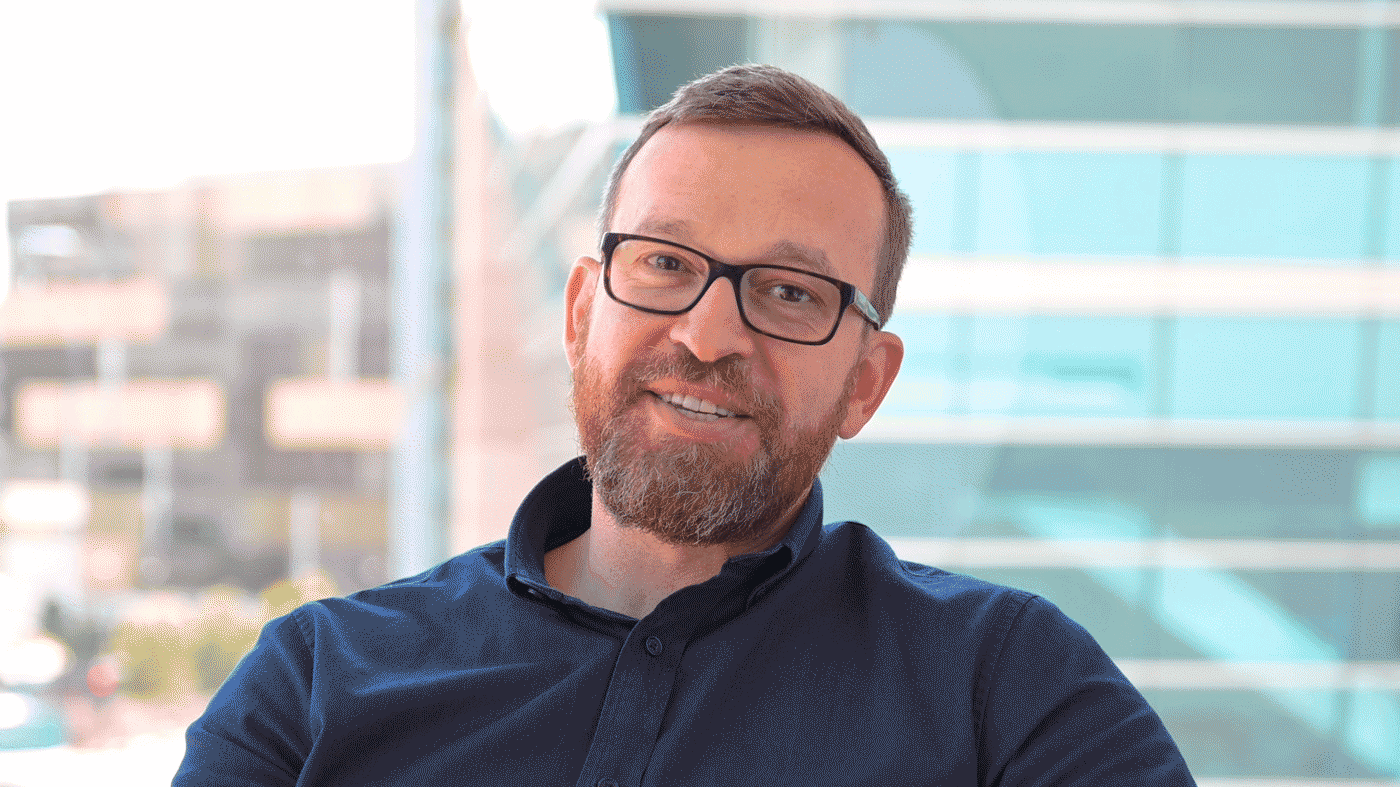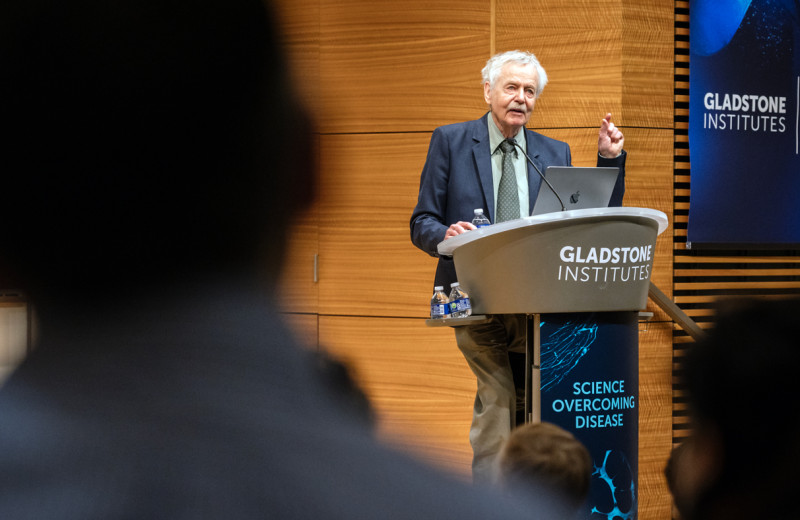Gladstone NOW: The Campaign Join Us on the Journey✕

Misha Zilberter cites his father, as well as his current mentor Yadong Huang, as the biggest influences in his career.
Born in Russia, Misha Zilberter (he/him), PhD, grew up in North Carolina and received his PhD in Neuroscience from Karolinska Institutet in Stockholm, Sweden. He is currently researching Alzheimer’s disease in the lab of Yadong Huang at Gladstone Institutes.
What brought you to Gladstone?
I wanted to do cutting-edge Alzheimer’s research, so when the opportunity came to join Yadong Huang’s lab at Gladstone, I moved back to the US from Sweden. What do you like about Gladstone?
I like Gladstone’s focus on research, as well as its collaborative spirit and supportive atmosphere.
What are the key areas of research you are focused on?
My research focuses on understanding how brain cells, especially neurons, produce energy, manage oxidative stress, and generate electrical signals to communicate. In Alzheimer’s disease, certain proteins and genes disrupt these functions, causing a chain reaction that affects energy production and communication between neurons. This breakdown makes it harder for the brain to process information, leading to difficulties with learning and memory. My goal is to pinpoint where and why these problems begin and find ways to stop them to protect brain function.
What do you see as the biggest challenges when it comes to combating Alzheimer’s disease?
Its multifactorial nature. There isn’t a single cause or trigger; instead, the disease results from a complex interplay of various factors, genes, and pathways. This makes it difficult to tackle because research often focuses on one specific mechanism at a time. However, in reality, these mechanisms don’t operate in isolation, but are part of an intricate web of interactions. Understanding and addressing this complexity, along with the causal chain of events and triggers, is crucial for developing effective treatments.
How do you collaborate with other researchers, both within Gladstone and externally?
Research in Progress seminars are a great way to find out about research happening in other labs at Gladstone, to share ideas, and to find ways to collaborate afterward. There is such a wide diversity of expertise and techniques at Gladstone that often complement each other.
How does interdisciplinary collaboration enhance the quality and impact of your research?
While the electrophysiology method we use in our lab is invaluable for examining functional changes in neurons and networks, understanding the underlying causes at a molecular level requires transcriptomic and proteomic data. CRISPR gene editing then allows us to validate these molecular targets. This collaborative approach not only deepens our understanding, but also expands the scope and quality of our research, making it more comprehensive and impactful.
Who has been the biggest influence in your scientific career?
My father is the one who introduced me to neuroscience and electrophysiology when I was a kid, and he reminded me about it when I was still an engineer and considering choosing a different career.
In addition, Yadong Huang, my current mentor, has taught me to ask the important questions, to think outside the box, and to be more daring in choosing new directions.
What do you do when you are not working?
I like sports like strength training, judo, and Brazilian jiu-jitsu. I also enjoy traveling and reading.
What is your hidden talent?
I wish I could say it was guitar, but even though I’ve been playing for 30 years, I’m still pretty bad at it. So maybe I’ll say handstands, cartwheels, and somersaults.
What advice would you give to young scientists or students interested in your field?
Tools and techniques are not as important as asking the right questions. Always keep sight of the big picture and what is the next step.
Want to Join the Team?
Our people are our most important asset. We offer a wide array of career opportunities both in our administrative offices and in our labs.
Explore CareersA Sculptor of Modern Regenerative Medicine
A Sculptor of Modern Regenerative Medicine
Among his myriad accomplishments, Rudolf Jaenisch—winner of the 2025 Ogawa-Yamanaka Stem Cell Prize—was the first to demonstrate the potential of induced pluripotent stem cells to treat disease.
Awards Ogawa Stem Cell Prize Profile Regenerative Medicine Stem Cells/iPSCsMeet Gladstone: Shijie Wang
Meet Gladstone: Shijie Wang
Shijie Wang, a postdoctoral scholar in Steve Finkbeiner’s lab, uses artificial intelligence, robotics, and stem cell technologies to uncover how brain cells die in neurodegenerative diseases like Alzheimer’s and Parkinson’s.
Profile Neurological Disease Finkbeiner Lab AI Robotic MicroscopyMeet Gladstone: Oscar Yip
Meet Gladstone: Oscar Yip
Oscar Yip is advancing Alzheimer’s research in Yadong Huang’s lab at Gladstone while drawing inspiration from his family, community, and his broader goal of helping patients.
Graduate Students and Postdocs Profile Alzheimer’s Disease



